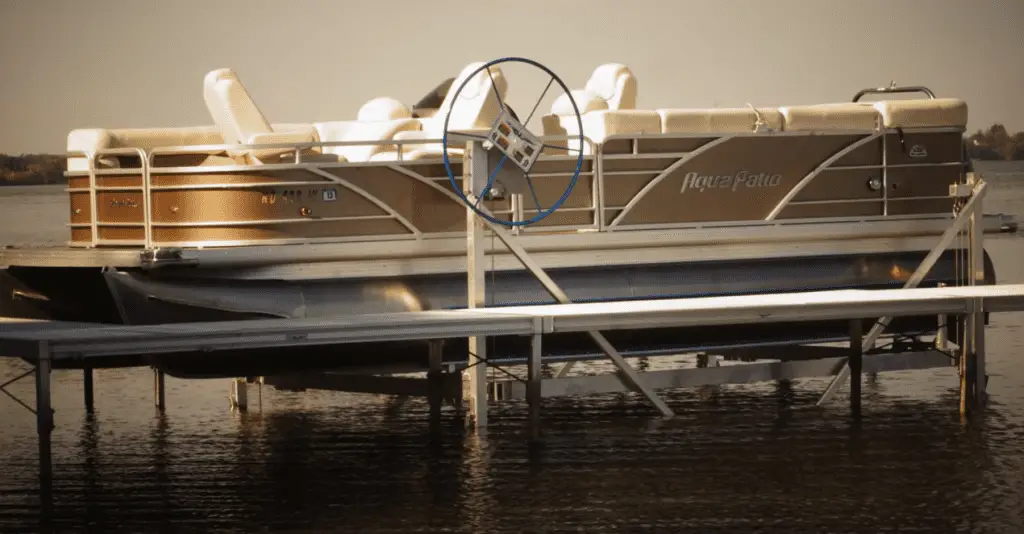As a boat owner, it’s your responsibility to make sure you know the ins and outs of your boat. There’s a lot of repair and maintenance that goes into boat ownership, and understanding all of those different parts puts you at an advantage to detect and resolve problems as they come along.
That said, do you have any idea what are stringers on a boat? Exactly. They’re not always talked about, but they do serve a vital purpose. And when they’re damaged, your boat’s structural integrity takes a major hit. That’s why it’s important to brush up on the topic of stringers so you’re never caught unaware.
What are Stringers on a Boat and What Do They Look Like?
Imagine if the hull of your boat and the deck were layered together like a sandwich - nothing in between. Your boat would probably give way the moment you laid any sort of weight on its surface. That’s what stringers are for.
These stringers are kind of like joists underneath your floor boards. They work to provide structural stability for the deck you sit and stand on. They’re arranged in a sort of grid placement to give every area of deck sound support.
Boat stringers are most common in older boats or in pre-fabricated fiberglass molds. In wooden boats, they look like, well wood. They’re made from 3/4” plywood planks that are cut to size so that they run from the bow to the stern and from port to starboard creating a lattice sort of pattern.
For fiberglass and laminated boats, the wooden planks are given a fiberglass cover. That means they’re still made of wood, but they’re reinforced with the fiberglass laminate to make them more appropriate for the boat they’re going to be used for.
When is it Time to Replace the Stringers?
Just like any other part of your boat, the stringers will give in to wear and tear over time. But because they play a vital role in the structural integrity of your boat, you can’t really leave them without repair for long.
However unlike other parts of your vessel that are easily seen, stringers are hidden from view. This makes it tough to figure out whether or not it’s time to replace or repair them. On the upside, you can still perform an inspection with these tried and tested methods:
Check for Holes in the Deck
If there are holes in your deck, then there’s a chance that water has passed through the surface and underneath into the part where the stringers sit. And because there won’t be a hole in your hull (ideally), it’s very possible that any water or moisture that has managed to seep through probably won’t have a way to get out.
You can be certain that the stringers under the deck are damaged if the edges of the holes on the deck have also given in to significant damage. Browning, soft wood or deck material indicates that it’s probably seen a lot of water, thus implying that the interiors have also probably been water logged for a while.
Peeling Deck Material
Also called deck delamination, this happens on fiberglass or laminated boats. When the cloth layers and coatings on the surface of the deck are constantly exposed to moisture, the deck is ‘delaminated.’
If this is allowed to persist without repair, then the delaminated material loses its ability to resist water penetration. So the more you use your boat, the more water passes through to the stringers, causing significant damage to the interiors of the boat.
Apparent Damage on the Stringers
If there are holes in the deck or if the delaminating material gets worn enough, then you might be able to get a look at the stringers inside. Take a peek into the interior and check for signs of damage on the inner support system.
Brown spots, softening material, and signs of rot should tell you that it’s high time to get those stringers replaced and that it might only be a matter of time before they give in completely. In some cases, stringers might also have mechanical damage that results from hitting your boat against obstacles or objects in the water or during transport.
How to Replace or Repair Boat Stringers

It’s typically recommended to leave the job of stringer replacement and repair to professionals since these integral boat parts serve a serious purpose to keep your boat safe and stable. But if you think you might be able to do the job yourself then you’re going to want to follow these steps.
For Boat Stringer Repair:
- For localized areas of rot, you can simply dry the area and inject epoxy. This is a limited repair though and may need to be revisited within a few months for proper resolve.
- If the damage is a little bigger, you can replace the section of the stringers you’re trying to fix.
- Cut out the rotten or broken piece from the main stringer.
- Trim a new piece that’s exactly the same shape and size as the original as this is necessary for proper repair.
- Clean, dry, and sand the surfaces to prepare them for bonding.
- Add a generous amount of thick epoxy and place the replacement piece. Clamp the piece until the epoxy dries.
- Then you can move on to replacing the fiberglass skin.
For Boat Stringer Replacement:
This process follows the same procedure as that outlined above, with the sole exception that you’ll be taking out a whole stringer. You might also want to consider keeping the removed stringer for reference so you can measure out a replacement piece that’s the exact same dimensions.
Sand down all of the involved surfaces to prepare the material for bonding. Then apply a liberal amount of epoxy and press the new piece into its place so that the epoxy is squeezed out of the joints. You can also take extra epoxy to reinforce the joints of the stringer set up.
Make sure that you measure the thickness of the fiberglass or laminate cover so you can match the original. Wait for the epoxy to dry completely before you apply the exterior layer.
Checking Stringers When Buying a Boat
No one really asks about stringers when buying a boat because it’s not one of the features that you immediately notice or even think about. But it’s important to make sure you ask the right questions regarding stringers since this will impact the lifespan of the boat you’re buying and your safety whenever you decide to take it out on the water.
Here’s how to check stringers on a boat when making a purchase:
Ask When They Were Last Replaced
The boat owner should be able to give you a rough estimate of the year or month that the stringers were last repaired or replaced. If you’re buying an old boat and they say the stringers have yet to be dealt with, then that might be a bad sign.
Check the Hull
No, you’re not going to be able to see through the hull material. But damage on the hull might indicate that water has seeped through the deck and into the space where the stringers are.
Take a Peek into the Hatch
If the boat has a hatch, then you can open it up to look into the area of the stringers. Check for plywood construction and whether the stringers have been covered in fiberglass or laminate to protect them from rot. Most older boats won’t have this added protective layer.
Inspect for Perforations
Boats use resin to seal up any perforations that were made for passing wires or tubes. If you see bare wood instead of resin coated perforations, then the stringers may have been subject to some serious water damage.
If you’re buying a brand new boat, there are a few questions you’re going to want to ask the dealership to make sure the stringers aren’t going to be a problem in the long run.
- What are the stringers made of?
- What pattern do the stringers use?
- How wide are the planks used for each stringer? (Wider pieces offer better stability)
- Are the stringers molded or were they installed and glued into the hull? (Molded stringers are more durable)
- Are the gaps between the stringers filled with flotation foam for better buoyancy? (Flotation foam also protects against mechanical damage.)
- What kind of aftersales service do you offer for the repair and replacement of the stringers?
Out of Sight, But Not Out of Mind
The stringers might not be the first thing you think of when taking care of or buying a new boat. But just because they’re out of sight, doesn’t mean they should be out of mind. The stringers play an important role in boat stability and structural integrity, so it’s important that you pay close attention to their status.
Not all boat owners know what are stringers on a boat, but with the right knowledge and maintenance practices, you should be able to extend the life of that unseen structural support to keep your boat in top condition for many years to come.





